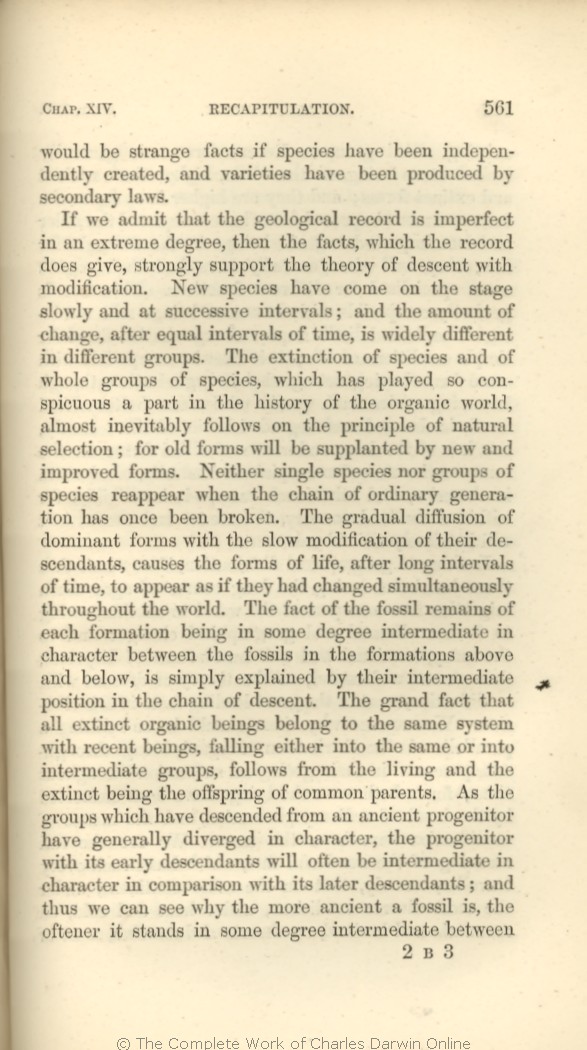would be
strange | strange 1859 1860 1861 1866 | | a strange 1869 1872 |
| facts 1859 1860 1861 1866 | | fact, 1869 1872 |
| have 1859 1860 1861 1866 1869 | | had 1872 |
| created, 1859 1860 1861 1866 | | created 1869 1872 |
| have 1859 1860 1861 1866 1869 | | had 1872 |
| by 1859 1860 1861 1866 | | through 1869 1872 |
|
|
If we admit that the geological record is imperfect
in | in 1859 1860 1861 1866 1869 | | to 1872 |
| the 1866 1869 1872 | | such 1859 1860 1861 |
| facts, 1866 1869 1872 | | facts 1859 1860 1861 |
| which 1866 1869 1872 | | as 1859 1860 1861 |
| does give, strongly 1866 1869 1872 |
| gives, 1859 1860 |
| gives 1861 |
| on 1859 1860 1861 1866 | | from 1869 1872 |
| will be 1859 1860 1861 1866 | | are 1869 1872 |
| reappear 1859 1860 1861 1866 1869 | | re-appear 1872 |
| has 1859 1860 1861 1866 | | is 1869 1872 |
| been 1859 1860 1861 1866 | been 1869 1872 |
| forms 1866 | | forms, 1859 1860 1861 1869 1872 |
| formation 1866 | | formations 1859 1860 1861 1869 1872 |
| organic 1859 1860 1861 1866 | organic 1869 1872 |
| belong to the same system with 1859 1860 1861 1866 |
| can be classed with all 1869 1872 |
| falling either into the same or into intermediate groups, 1859 1860 1861 1866 |
| naturally 1869 1872 |
| offspring 1859 1860 1866 1869 1872 | | off-spring 1861 |
| the groups which have descended from an ancient progenitor 1859 1860 1861 1866 |
| species 1869 1872 |
| character, 1859 1860 1861 1866 | | character 1869 1872 |
| the progenitor with its early descendants will often be intermediate in character in comparison with its later descendants; and thus 1859 1860 1861 1866 |
| during their long course of descent and modification, 1869 1872 |
| see 1859 1860 1861 1866 | | understand 1869 1872 |
| the 1859 1860 1861 1866 |
| it is that the 1869 1872 |
| a fossil is, the oftener it stands 1859 1860 1861 1866 |
| forms, or early progenitors of each group, so often occupy a position 1869 1872 |
|









